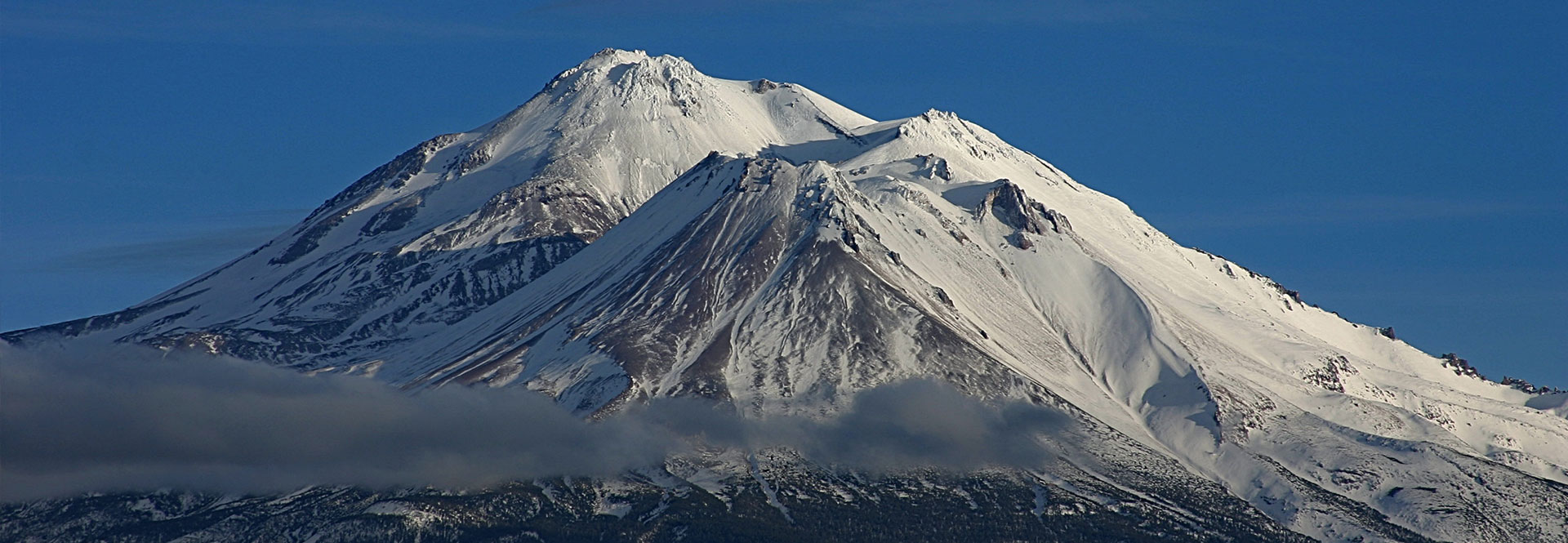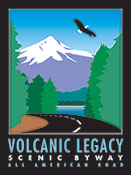

VOLCANOES ALONG THE BYWAY
To our knowledge there is no other byway or region where you can see not one but ten volcanoes on one trip. But that is what you’ll see along the VLSB.
Depending on the reference source, volcanoes are classified into several groupings; including: Cinder Cones (also called Spatter Cones), Composite Volcanoes, Shield Volcanoes, Caldera Complexes, and Lava Domes.
The VLSB is home to one Cinder Cone, one Caldera Complex, two Lava Domes, three Shield Volcanoes, and three Composite Volcanoes.
Lassen Peak
Lassen Peak (10,456 ft.)
Located on southern end of the Cascade Range, Lassen Peak is a large plug dome that is 27,000 years old. At 10,457 ft, it has a well marked trail to its summit.
Burney Mountain
Burney Mountain (7,858 ft.)
Burney Mountain is a small composite volcano composed of 5 lava domes overlying lava flows.
Black Butte
Black Butte (6,325 ft.)
With easy access near I-5, this plug dome volcano has a 2.5 mile path that climbs to the summit.
Mount Shasta
Mount Shasta (14,179 ft.)
Driving the 500-mile Volcanic Legacy Scenic Byway in any direction, and about half way between Lassen Volcanic National Park and Crater Lake National Park is a spectacular geological feature called Mount Shasta, the largest composite volcano in the Cascade Range. Rising at an elevation of 14,162 feet above sea level it is a steep-sided Stratovolcano-the most voluminous of all the Cascade Range Volcanoes-and cannot be missed unless it is shrouded with cloud cover. Here you can enjoy hiking, snowshoeing, and technical climbs requiring ropes and crampons year-round.
You can also find ten (10) identified glaciers on Mt. Shasta with Whitney Glacier on the mountain’s north side being one of its greatest features. It is the longest glacier in California and the second largest in volume. It is a magnificent river of ice forming just below the summit, between the peak and Shastina, snaking more than two miles down the volcano’s north flank. It is awe-inspiring, but, compared to the massive scale of the mountain, it is easily overlooked or unrecognized. The valley glaciers on Mt. Shasta rank as numbers 1-4 in size of all the glaciers in California; and all of them are still growing in size.
Whaleback Mountain
Whaleback Mountain (8,344 ft.)
This shield volcano is composed of dark basaltic andesite, and has 4 cinder cones and 4 craters that appear from a distance as two mounds giving the mountain its distinct whaleback shape.
Deer Mountain
Deer Mountain (7,006 ft.)
Deer Mountain, a single andesite shield volcano, is built on older, extinct volcanoes and is covered with a thin veneer of Red Banks pumice from a 10,000 year old eruptions of Mount Shasta.
Medicine Lake
Medicine Lake (7,913 ft.)
This is the biggest Pleistocene-Holocene shield volcano (140 cubic miles) in the west and has several spectacular rhyolite lava flows near its summit that are composed of obsidian.
Lava Beds
Lava Beds National Monument
Covering approximately 73 sq. miles, Lava Beds National Monument is home to dozens of cinder cones, lava flows, volcanic features and over 700 lava tube caves.
Mount McLoughlin
Mount McLoughlin (9,496 ft.)
Extensive glaciation on the NE side of this andesite composite or lava cone volcano has exposed the interior structure, including two solidified conduits that once supplied the summit crater. A 7-mile path to its summit also links to the Pacific Crest Trail.
Mount Mazama
Mount Mazama (8,156 ft.)
The collapse of this ancient composite volcano 7,700 years ago, left a caldera that filled up with water and snow melt over a few centuries to form Crater Lake, the deepest fresh water lake (1,943 ft.) in the continental U.S.

